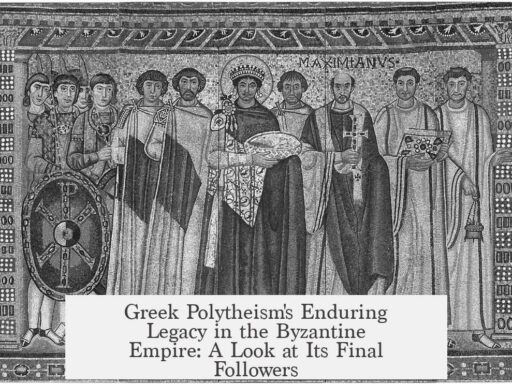The moral outrage surrounding The Simpsons in the 1990s largely arose because the show, especially through Bart Simpson, symbolized a cultural clash that unsettled many adults. Bart’s rebellious behavior and blunt disrespect for authority challenged traditional family values and schooling norms, provoking fears of eroding parental and educational control. This reaction reflected widespread generational tension and anxiety about youth conduct at the time.
When The Simpsons aired in the early 1990s, it featured Bart as a central character defined by delinquent and defiant behavior. Bart was not simply a mischievous child; he was a symbol of youth rebellion. His catchphrases like “Don’t have a cow, man” and “Eat my shorts” reinforced this image. To many middle-aged and older adults, Bart embodied the “brat” that disrupted social order and disrespected authority figures, including parents and teachers.
This portrayal triggered considerable pushback. Education and parent organizations criticized the show from its outset. Even political figures such as then-Secretary of Education William Bennett voiced concerns. Schools banned Bart-themed attire, including T-shirts bearing the slogan “Underachiever and Proud of It,” which suggested endorsement of anti-achievement attitudes among youth. Bart’s caricature became shorthand for a broader anxiety about declining discipline and respect in young people.
Adults perceived Bart’s open disrespect and rebelliousness as an attack on traditional parenting and educational values. He frequently addressed his father by his first name, Homer, rather than “Dad,” signifying a breakdown in family hierarchy. Psychologists at the time labeled these trends the “Bart Simpson syndrome,” highlighting what they saw as a blurring of boundaries between children and adults and a weakening of parental authority.
On a societal level, The Simpsons became a battleground reflecting wider cultural debates. President George H. W. Bush openly criticized the program during his 1992 re-election campaign. He contrasted the wholesome, idealized family of The Waltons with what he characterized as the disruptive, underachieving Simpsons household. Bart’s on-show witty retort underscored this cultural divide, emphasizing the generational clash over values and attitudes.
The controversy also stemmed from the show’s tone and characters. Early episodes depicted Homer as an often angry, intimidating father figure, rather than the later portrayal of a lovable but foolish dad. This rougher depiction of family dynamics further unsettled adults who saw the program as a corrosive force on family respect and cohesion. Meanwhile, The Simpsons’ approach mixed satire with absurdity and crude humor—a shift from previous family cartoons that tended toward wholesome or idealized representations.
By mid-1990s, the show evolved. Its storytelling broadened beyond Bart’s anarchic antics to include richer portrayals of other family members. Homer became more of a bumbling but endearing character, and the tone softened. This progression lessened the initial shock value but did not fully erase earlier fears. Only in hindsight, especially with the emergence of more provocative shows like South Park, does The Simpsons appear tame and innocent by comparison.
| Aspect | 1990s Perception | Later Perspective |
|---|---|---|
| Bart’s Character | Rebellious, delinquent, disrespectful “brat” causing moral panic | Iconic character with diluted rebellious traits, seen as humorous |
| Parental Authority | Viewed as undermined by Bart’s behavior and catchphrases | Less controversial; authority themes softened with character development |
| Educational Impact | Schools banned Bart merchandise; concerns over students’ attitudes | Criticism faded with time; academic concerns replaced by cultural nostalgia |
| Political Response | Negative from figures like George H.W. Bush, reflecting generational gap | Seen as a symbolic episode in culture wars of the era |
The moral outrage originated from genuine fears that Bart’s character challenged and eroded traditional social structures. Adults interpreted the show as endorsing disrespect and laziness. The generational divide was rooted in differing views on discipline and cultural values. This clash magnified the show’s impact beyond entertainment into a symbol of societal change. While now considered mild and innocuous, The Simpsons initially confronted audiences with shock and discomfort about shifting family and social norms in the early 1990s.
- The 1990s moral panic focused on Bart Simpson as a symbol of youth rebellion and disrespect.
- Parents and educators criticized the show for promoting attitudes that undermined authority and discipline.
- Political figures highlighted the program as part of a broader cultural decline.
- The initial portrayal of Homer as an angry father accentuated concerns about family values.
- Over time, The Simpsons evolved and became more accepted, appearing tame by later standards.
Why The Simpsons Shocked Adults in the 1990s: The Untold Story of Bart’s Rebellion
While The Simpsons might feel like child’s play today in our post-South-Park era, it genuinely shocked middle-aged and older adults when it first aired in the 1990s. This was more than just a generational taste difference—it sparked moral outrage. But why?
Let’s rewind the clock and step into the cultural rollercoaster of early 90s America to understand this. Spoiler: it’s not just about laughs; it’s about rebellion, authority, and a family dynamic that was far from the warm, fuzzy picture many were used to.
From Silly Animation to Cultural Lightning Rod
The Simpsons started as an animated oddball. Early critics called it “outlandish” and “silly,” with episodes featuring Homer covered in pond slime or mistaken for Big Foot. It was bizarre, juvenile, and sometimes downright weird.
But weird isn’t usually scandalous. What pushed the buttons of many 90s adults was not just absurd humor, but the family at the show’s heart—a family less like the perfect icons of TV’s past, and more like a dysfunctional, rebellious crew.
Bart Simpson: More Than Just a Cartoon Kid
Bart wasn’t just a troublemaker—he was a **symbol** of youth rebellion. As the show’s early focal point, his antics disrupted traditional views of childhood obedience. Remember his catchphrases: “Don’t have a cow, man!” and “Eat my shorts!”? These weren’t just jokes; they were rebellious mantras.
Adults saw Bart as a “brat,” a mini-delinquent skateboarding through decorum and respect. Schools even banned kids from wearing his “Underachiever and Proud of It” T-shirts. Talk about walking rebellion on cotton fabric!
Education and parent groups, including some school principals and the then U.S. Secretary of Education William Bennett, publicly denounced the show. Their main beef? Bart’s constant mockery of schooling and authority seemed to encourage disrespect toward teachers and family.
Homer: Not Yet the Lovable Goofball
Now, here’s a twist. Homer—the dad we now think of as a clumsy, harmless doofus—was initially portrayed as an angry, sometimes frightening father prone to violent outbursts.
Yes, you heard right. He was intimidating. That disturbed parents more than Bart’s pranks sometimes, because the family dynamic felt less comedic and more unsettling—a recipe for discomfort rather than comfort.
The Cultural Uproar: Why Did Adults Get So Worked Up?
Picture this: by mid-1990, you couldn’t escape Bart Simpson T-shirts. Berkeley students sported them casually, not for activism, but irreverence. Bart became the mascot of youth defiance. Adults weren’t just annoyed—they felt challenged.
To many, Bart epitomized an erosion of respect for family and school. Psychologists coined “Bart Simpson syndrome” to explain the growing teenage trend of defiance and disrespect. Calling his father “Homer” instead of “Dad” was a subtle but powerful symbol of blurred lines between adults and kids.
“Bart’s open disrespect epitomized this perceived loss of authority.”
And it wasn’t just a scare tactic. Many parents actually banned the show from their homes to protect their children from what they saw as a bad influence. Bart wasn’t just annoying; he threatened the very fabric of parenting and education.
Political Lightning Rod
The controversy even reached the White House. During George H. W. Bush’s 1992 re-election campaign, he publicly criticized The Simpsons, wishing for “an America a lot more like the Waltons and a lot less like the Simpsons.”
Bart fired back on the show, quipping, “We’re just like the Waltons. We’re praying for the Depression to end, too.” This cleverly highlighted the cultural clash—traditional values vs. modern youth skepticism and struggle.
How The Simpsons Evolved—and Why It Seems Tamer Now
Fast forward a few seasons, and The Simpsons matured. By seasons 3 to 8, the focus wasn’t solely on Bart anymore. The show explored the whole family and town, softening Bart’s anarchic traits and making Homer the lovable, bumbling dad we adore today.
This shift helped reduce the shock and moral panic. The once ‘scandalous’ show became more about heart and humor than rebellion and conflict. So when we look back, the early 90s outrage seems like an overreaction—but one rooted in deep cultural anxiety.
Why the Moral Panic Makes Sense in Context
Today, shows like South Park, Rick and Morty, and others seem to turn up the controversial dial way higher. In comparison, The Simpsons feels almost innocent. But in the early 90s, just the idea of a kid openly disrespecting authority and a father who might scare you was enough to trigger alarm bells.
The moral outrage was less a response to explicit content or shock humor. It was about an era grappling with changing social norms, parental authority, and the role of education. Bart Simpson wasn’t just a cartoon kid—he was a reflection of broader social fears.
What Can We Learn From This?
- Generational divides produce culture wars: What one age finds harmless, another might find threatening. Bart’s rebellion wasn’t just childish pranks; it threatened adults’ authority and worldview.
- Character shifts can reduce cultural tension: As Homer softens and Bart diversifies, controversy fades, proving storytelling growth can ease tensions.
- Sometimes comedic shows serve as cultural mirrors: The Simpsons revealed middle-aged anxieties about youth, authority, and social change.
- Controversy often says more about society than the show itself: The outrage told us about the fears of erosion of control and respect in a changing world.
Final Thought
Remember your first watch of The Simpsons? Maybe you loved Bart’s pranks or laughed at Homer’s antics. But for those adults of the 1990s, these were signs of a social revolution — or so they feared.
In hindsight, their moral outrage seems a bit like alarm over a kid’s scraped knee—avoidable and short-lived—but deeply rooted in the shifting cultural landscape. Bart Simpson was less a menace and more a mischievous harbinger of change.
So, next time you hear “Don’t have a cow, man,” consider the generational earthquake it once caused. In a world of ever-escalating media shock, The Simpsons reminds us that sometimes, rebellion just looks like a kid on a skateboard — challenging the status quo with a sly grin, and maybe a little slime.


